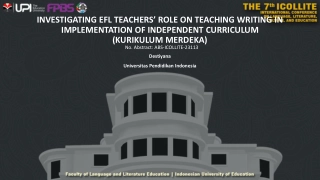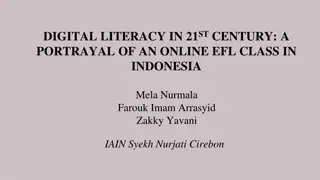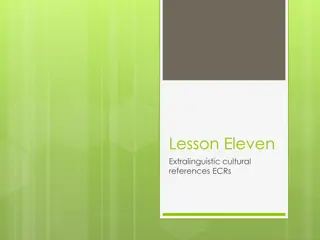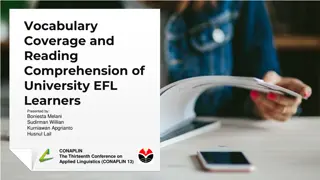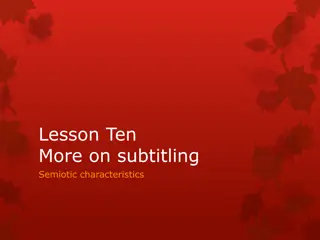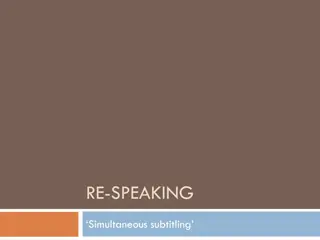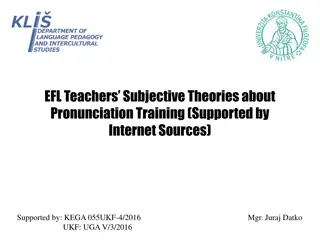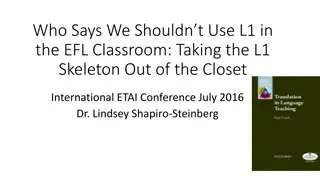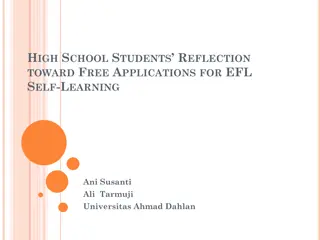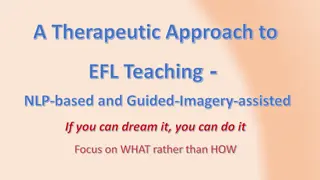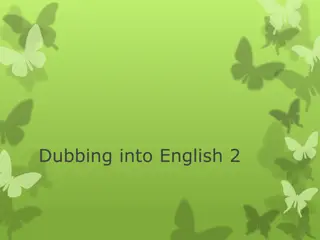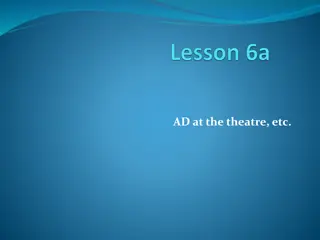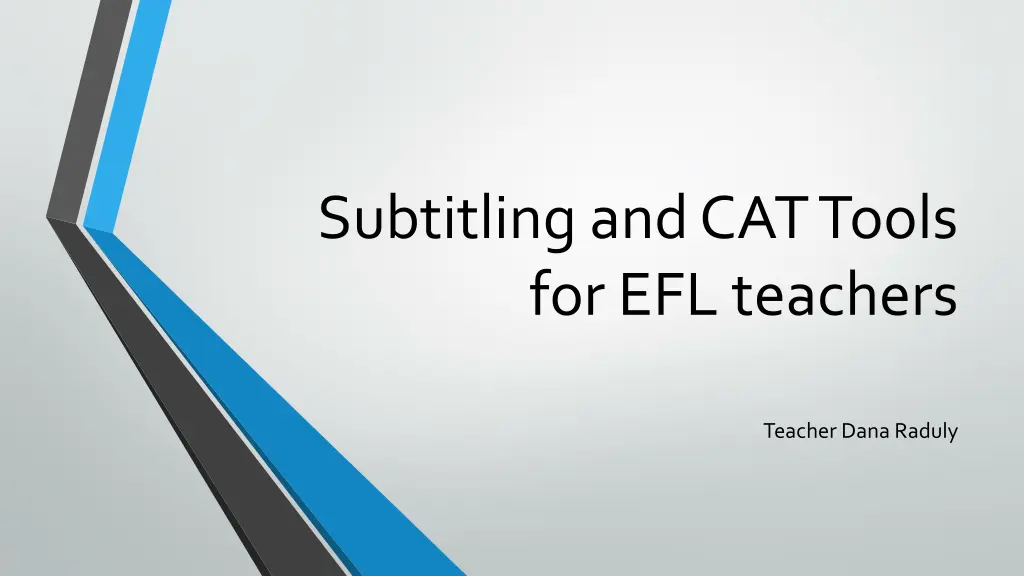
Enhancing Language Acquisition Through Subtitling in EFL Education
Explore the benefits of using subtitling and CAT tools for EFL teachers to enhance language acquisition. Discover the different ways of rendering language, the importance of transcribing, and the role of subtitling in providing a rich context for foreign language acquisition.
Download Presentation

Please find below an Image/Link to download the presentation.
The content on the website is provided AS IS for your information and personal use only. It may not be sold, licensed, or shared on other websites without obtaining consent from the author. If you encounter any issues during the download, it is possible that the publisher has removed the file from their server.
You are allowed to download the files provided on this website for personal or commercial use, subject to the condition that they are used lawfully. All files are the property of their respective owners.
The content on the website is provided AS IS for your information and personal use only. It may not be sold, licensed, or shared on other websites without obtaining consent from the author.
E N D
Presentation Transcript
SubtitlingandCAT Tools for EFL teachers TeacherDana Raduly
Different waysof rendering the source language messageinto a target language (En-Ro or Ro-En) Subtitling Dubbing Closed captions (En-En)
CAPTIONS AskSs to transcribe the movie/video clip (in the original language-English) in orderto improve their listening skills. (paper/computer/special software) Whyis thisimportant? This is normally doneautomatically (seeYoutube) but with several isssues.
SUBTITLING mainrole -toprovide a written translation of the spokendialogue, BUT alsoto teach, revise andmaintainlanguages For EFL use -notsubtitling proper(it is professional) but closerto fansubs/fansubbing(amateurpractice) veverita_bc What tosubtitle? consider the - content and the comfort level of students -culture and age appropriateness -suitability for both genders (keep interest)
SUBTITLING subtitled television programmesoffer a rich context for foreign language acquisition, as the information is presented via several means: visual images, spoken in the foreign language written- the subtitles in one's own language or the target language.
SUBTITLING Watching subtitled programmesmay generate different types of language acquisition. word meaning, acquire the meaning of expressions or standard sentences and constructions, and in which situations they can be used. pronunciation of certain words and sounds may be improved the ability to make distinction between different accents (British vs. American). the ability to construct correct sentences and distinguish between informal and colloquial connotations in spoken language
SUBTITLING Four possible combinations of sound and text: standard subtitles, also known as interlingual subtitles (foreign language audio with mother tongue subtitles); reversed subtitles (mother tongue audio with foreign language subtitles); intralingual subtitles or captions (foreign language audio and foreign language subtitles) subtitles for the deaf and hard-ofhearing (SDH), also known as closed- captions
SUBTITLING Studies: -children acquired more vocabulary when the foreign language was in the audio whereas -adults learnt best from reverse subtitling (foreign language in the subtitles and native language in the audio). Also, for adults more new words are acquired when presented visually rather than auditorially
SUBTITLING The presence of authenticinput from videos and audiovisual materials INTRALINGUAL subtitling Very effective for the acquisitionof idioms, phrasalverbs andcolloquiallanguage INTERLINGUAL subtitling
SUBTITLING Howisit done? Free/paid software (also see ClipFlairStudio ifyou are interested in usingit, contact me dana.raduly@gmail.com)and E.g. Aegisub for classroom use a.Ask Ss to transcribe the movie (in the original language) b.Ask Ss to translate the original text either in a separate doc or directly in the software, as subtitle c.In groups, more technical students can set the in and out times, and the ones who are better at languages can translate d.Make sure there is a supervisor who can check whether the translations are accurate (the teacher or a very good student that you trust) e.Save as .srt file and open with VLC player i. https://aegisub.en.uptodown.com/windows ii. https://www.checksub.com/subtitle/manual-create- subtitles-aegisub/ (tutorials) iii.https://www.kapwing.com/subtitles
SUBTITLING More subtitling options for Ss/Teachers who really like it a.https://amara.org/en/volunteer/ b.https://amara.org/en/teams/amplify/
SUBTITLING Other ideas on using videos in the EFL classroom a.Watch the video without sound and try to imagine what they are saying i.Subtitle for SDH (deaf and hearing impaired) i. You must add sounds, intonation, translate sounds. b.Subtitling in sitcoms i.See the differences ii.Compacted translations
DUBBING FOR EFL CLASSES A. Similar to role-playing/one voice i.Audio for the blind and visually impaired - As a way of making the Ss tell a story - Imagine the audience is blindfolded/cannot see how do you describe what is going on? - Describe places, things, actions B. Dubbing as actors (En- Ro or Ro-En)
INTERPRETING Consecutive interpreting in EFL classes Exercise To practise the language, but also memory and speaking skills
CAT Tools for translations a.Smartcat https://smartcat.com/workspace b.Example project in smartcat c.Terminology https://www.proz.com/

